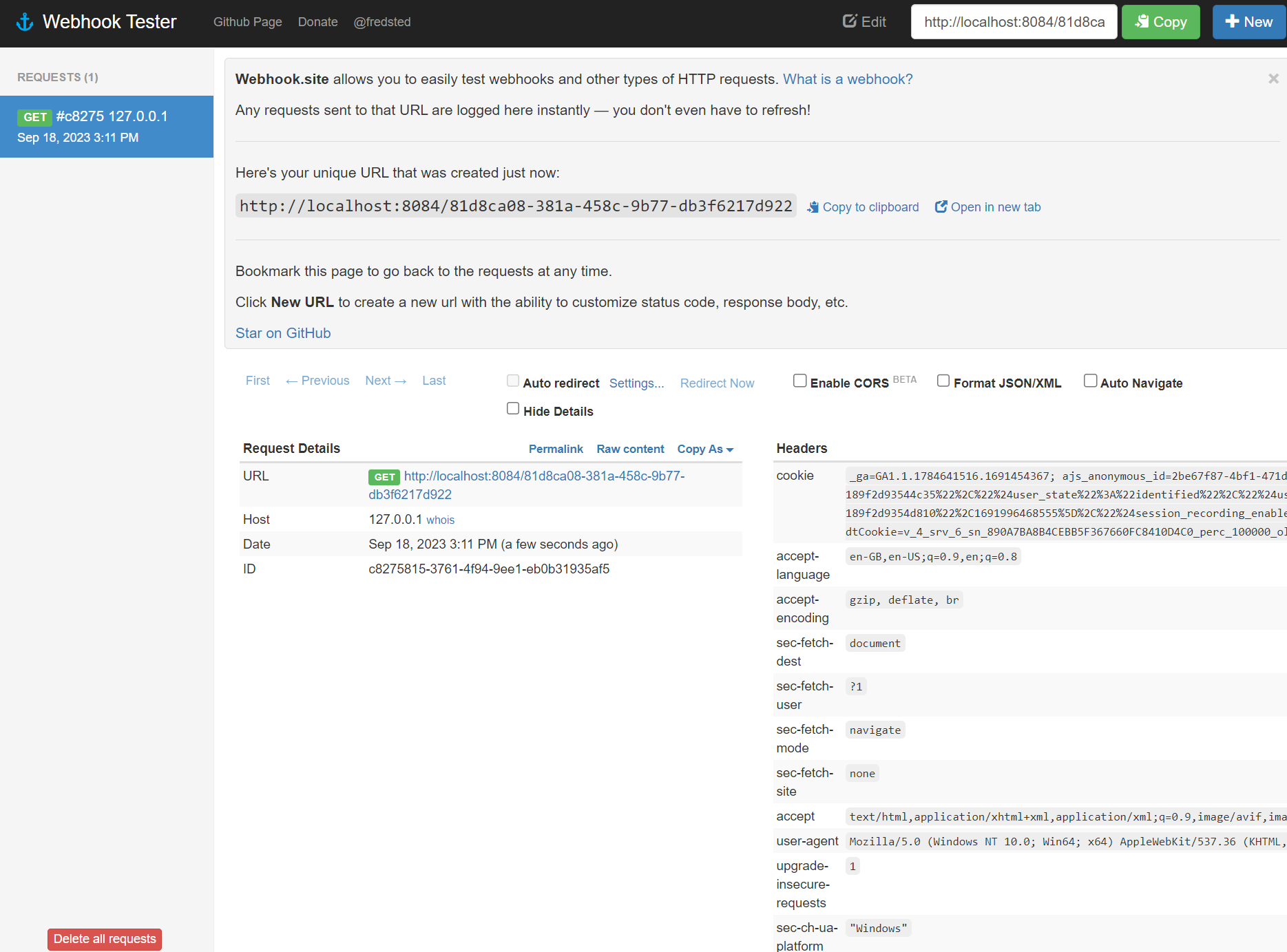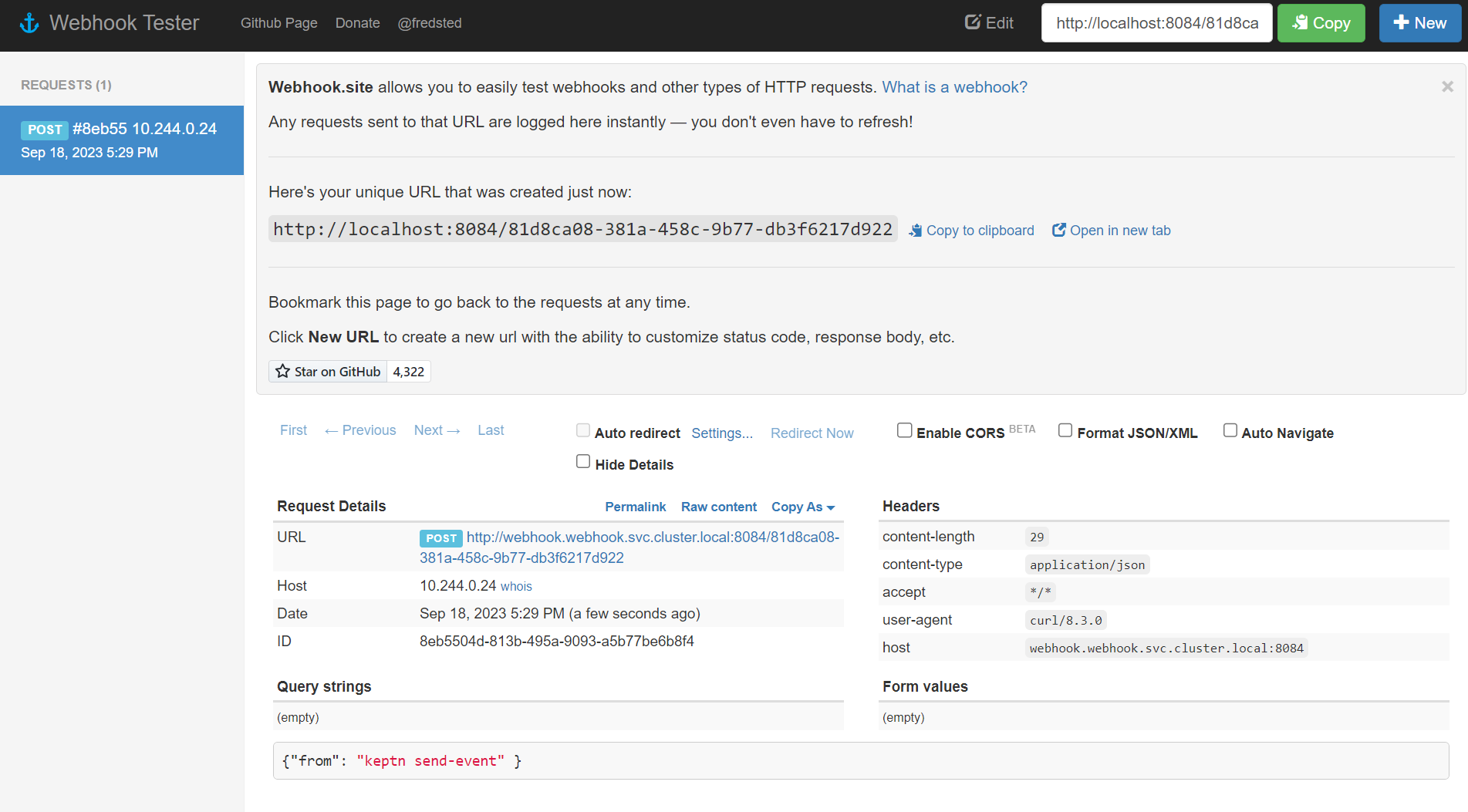Release Lifecycle Management
The Release Lifecycle Management tools run pre/post-deployment tasks and checks for your existing cloud-native deployments to make them more robust. This tutorial introduces these tools.
This tutorial assumes you have already completed the Getting started with Keptn Observability exercise. Please ensure you’ve finished that before attempting this exercise.
Keptn Pre and Post Deployment Tasks
When Keptn is successfully monitoring your deployments, it can also run arbitrary tasks and SLO evaluations for you either pre-deployment or post-deployment as specified in the pod template specs of your Workloads (Deployments, StatefulSets, DaemonSets, and ReplicaSets).
Pre and post deployments can also run on a
KeptnApplevel. AKeptnAppgroups multiple workloads into a single application. See annotations to KeptnApp
Prerequisites: Deploy webhook sink
During this exercise, you will configure Keptn to trigger a webhook before and after a deployment has completed successfully.
For demo purposes, a place is required to which those requests are sent. To implement this:
-
Install the open source webhook.site tool.
This provides a place on your cluster to which web requests are sent and from which they can be viewed.
-
Execute the following commands to apply the web hook:
Note: If you have your own endpoint, you can skip this step.
kubectl apply -f https://raw.githubusercontent.com/webhooksite/webhook.site/master/kubernetes/namespace.yml kubectl apply -f https://raw.githubusercontent.com/webhooksite/webhook.site/master/kubernetes/redis.deployment.yml kubectl apply -f https://raw.githubusercontent.com/webhooksite/webhook.site/master/kubernetes/laravel-echo-server.deployment.yml kubectl apply -f https://raw.githubusercontent.com/webhooksite/webhook.site/master/kubernetes/webhook.deployment.yml kubectl apply -f https://raw.githubusercontent.com/webhooksite/webhook.site/master/kubernetes/service.yml -
Wait until all pods are running in the
webhooknamespace then port-forward and view the webhook sink page:kubectl -n webhook wait --for=condition=Ready pods --all kubectl -n webhook port-forward svc/webhook 8084 -
Open a browser and go to
http://localhost:8084 -
You should see a page like this with a unique URL (your ID will be different than the example).

Make a note of that unique URL.
Verify Webhook Sink
Open a new browser table and go to your unique URL.
The page should remain blank, but when toggling back to http://localhost:8084, you should see a new entry.
Each request sent to that unique URL will be logged here.

Add a Post Deployment Task
Add a task which will trigger after a deployment.
Change UUID to whatever value you have.
Apply this manifest:
---
apiVersion: lifecycle.keptn.sh/v1alpha3
kind: KeptnTaskDefinition
metadata:
name: send-event
namespace: keptndemo
spec:
retries: 0
timeout: 5s
container:
name: curlcontainer
image: curlimages/curl:latest
args: [
'-X',
'POST',
'http://webhook.webhook.svc.cluster.local:8084/YOUR-UUID-HERE',
'-H',
'Content-Type: application/json',
'-d',
'{ "from": "keptn send-event" }'
]
Verify it works
Verify that the KeptnTaskDefinition resource shown above actually works.
Trigger an on-demand task execution to verify that the job and pod are working correctly.
In the following steps we will have Keptn orchestrate this for us automatically.
Apply this manifest:
---
apiVersion: lifecycle.keptn.sh/v1alpha3
kind: KeptnTask
metadata:
name: runsendevent1
namespace: keptndemo
spec:
taskDefinition: send-event
context:
appName: "my-test-app"
appVersion: "1.0.0"
objectType: ""
taskType: ""
workloadName: "my-test-workload"
workloadVersion: "1.0.0"
If it works, kubectl -n keptndemo get jobs should show:
NAME COMPLETIONS DURATION AGE
runsendevent1-***** 1/1 6s 2m
kubectl -n keptndemo get pods will show the successfully executed pod.
The webhook sync should show this:

Incidentally, this is exactly how you can use Keptn with applications deployed outside of Kubernetes.
Note: If you want to trigger this task multiple times, you must change the value of the
namefield in theKeptnTaskresource each time.For example, change
runsendevent1torunsendevent2.
Ask Keptn to trigger task after Deployment
Annotate the demo application Deployment manifest
to have Keptn automatically trigger the task after every deployment.
Recall the Deployment from the
Observability
Getting started guide.
Add a new label so the labels section looks like this:
...
labels:
app.kubernetes.io/part-of: keptndemoapp
app.kubernetes.io/name: nginx
app.kubernetes.io/version: 0.0.2
keptn.sh/post-deployment-tasks: "send-event"
...
Increase the version number to 0.0.2 and re-apply the manifest.
Here is a full version of the new YAML:
---
apiVersion: apps/v1
kind: Deployment
metadata:
name: nginx-deployment
namespace: keptndemo
labels:
app.kubernetes.io/name: nginx
spec:
replicas: 1
selector:
matchLabels:
app.kubernetes.io/name: nginx
template:
metadata:
labels:
app.kubernetes.io/part-of: keptndemoapp
app.kubernetes.io/name: nginx
app.kubernetes.io/version: 0.0.2
keptn.sh/post-deployment-tasks: "send-event"
spec:
containers:
- name: nginx
image: nginx:1.14.2
ports:
- containerPort: 80
Best Practice: Start with post deployment tasks. Pre-deployment tasks can potentially block deployments (see below).
What Happens Next?
- The deployment is applied.
- When the pods are running,
Keptn automatically creates a
KeptnTaskresource for version0.0.2of thisKeptnApp. - The
KeptnTaskcreates a KubernetesJob. - The Kubernetes
Jobcreates a KubernetesPod. - The
Podrunscurland sends a new event to the event sink.
Pre-deployment Tasks
Keptn Tasks can also be executed pre-deployment (before the pods are scheduled).
Do this by using the keptn.sh/pre-deployment-tasks label or annotation.
Note: If a pre-deployment task fails, the
Podremains in a Pending state.
Further Information
You can do much more with KeptnTask resources.
See the
pre and post deployment checks
page and the
Deployment tasks
page to find out more.
What’s next?
Keptn can also run simple pre- and post-deployment SLO evaluations.
Continue the Keptn learning journey by adding evaluations. See the Evaluations for more information.